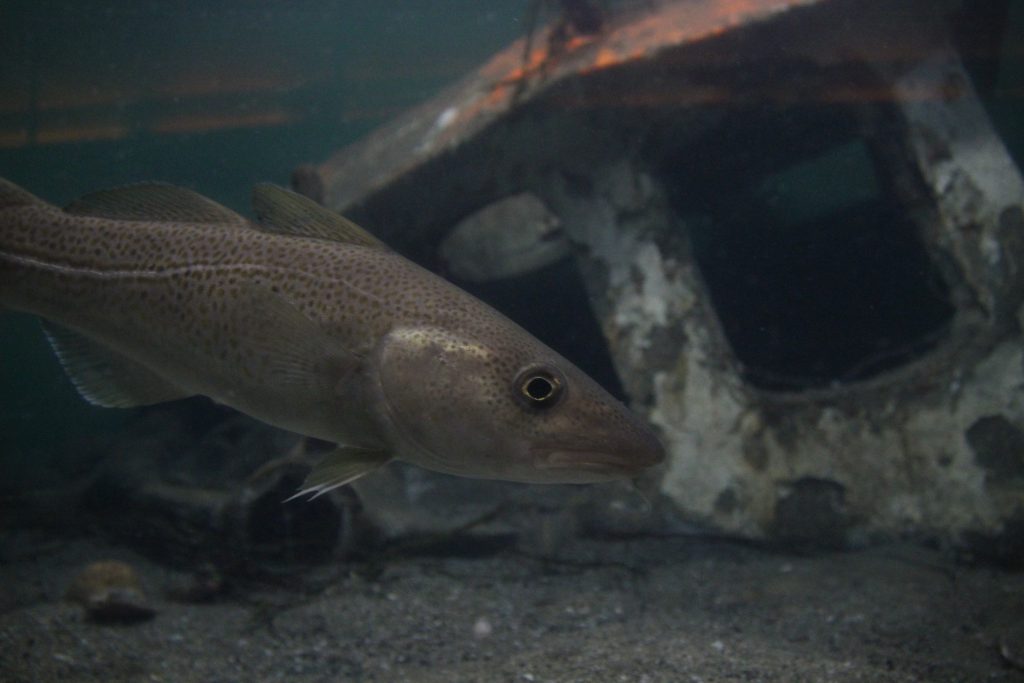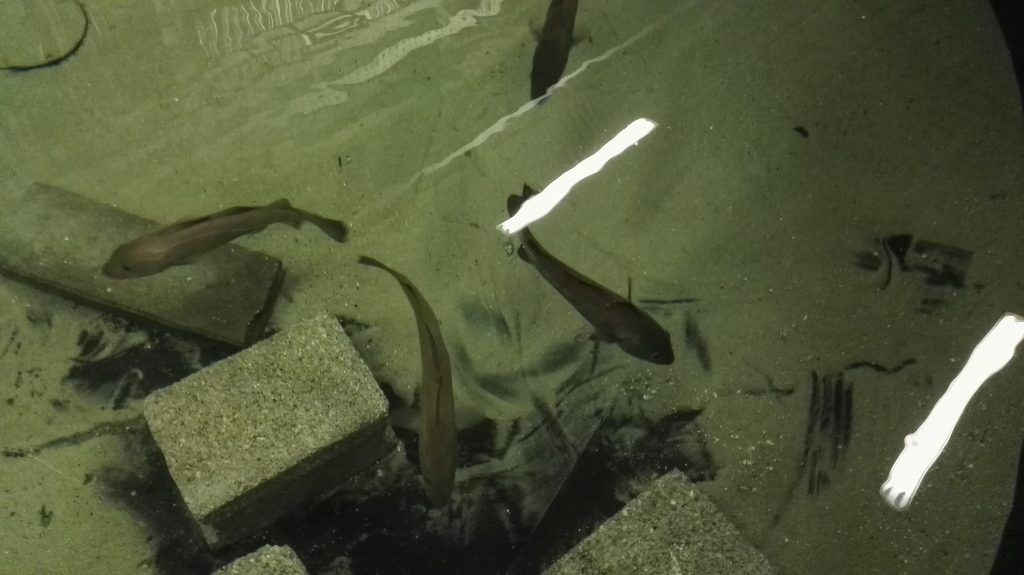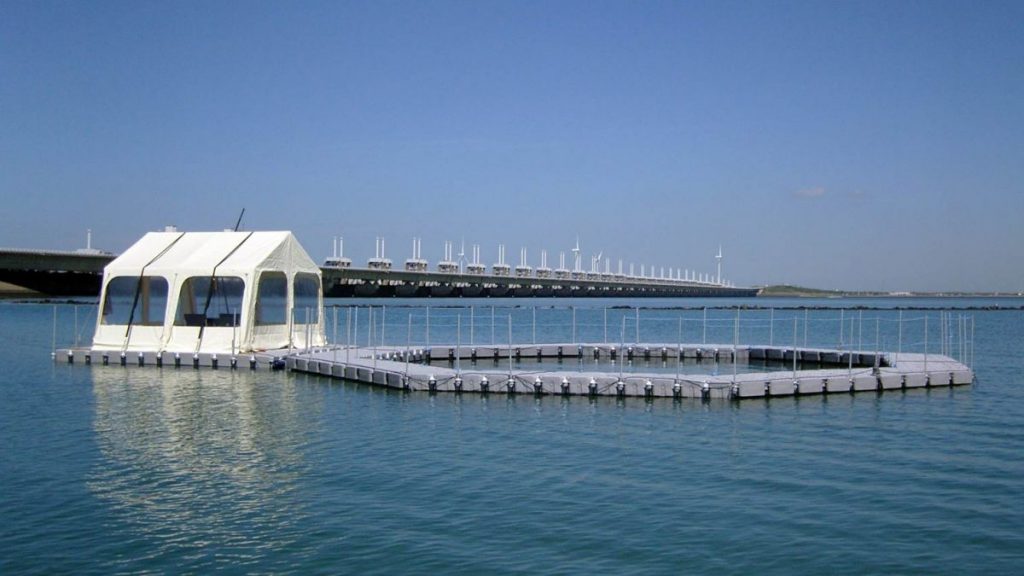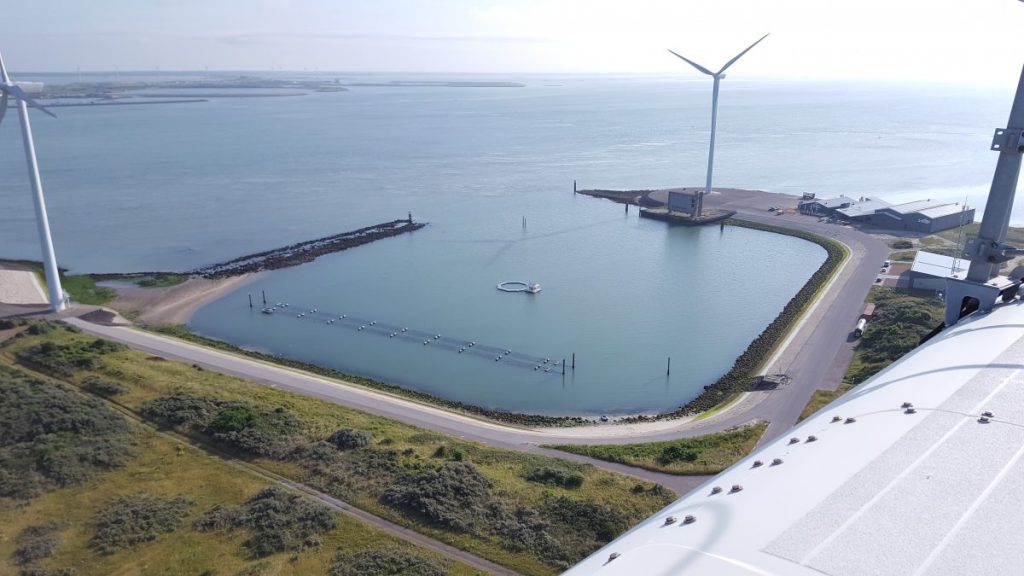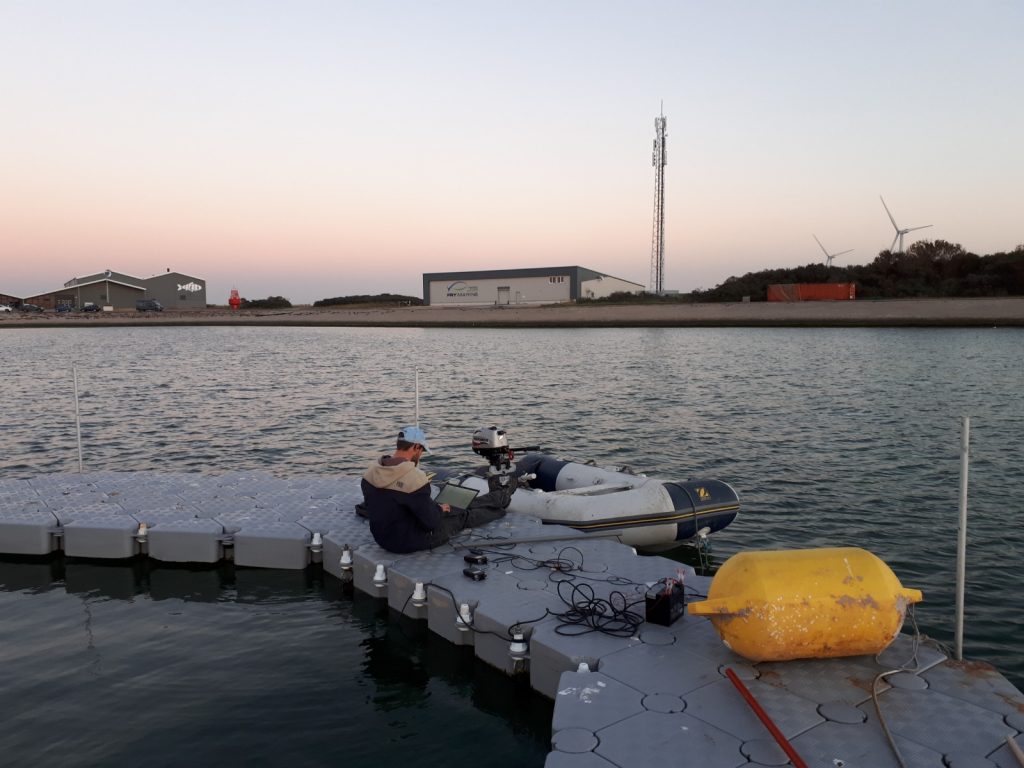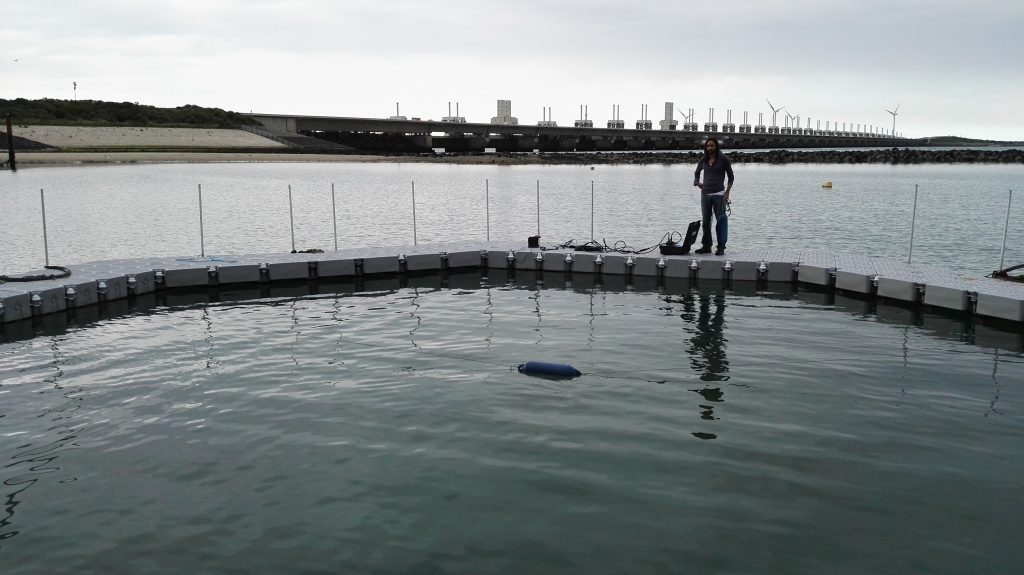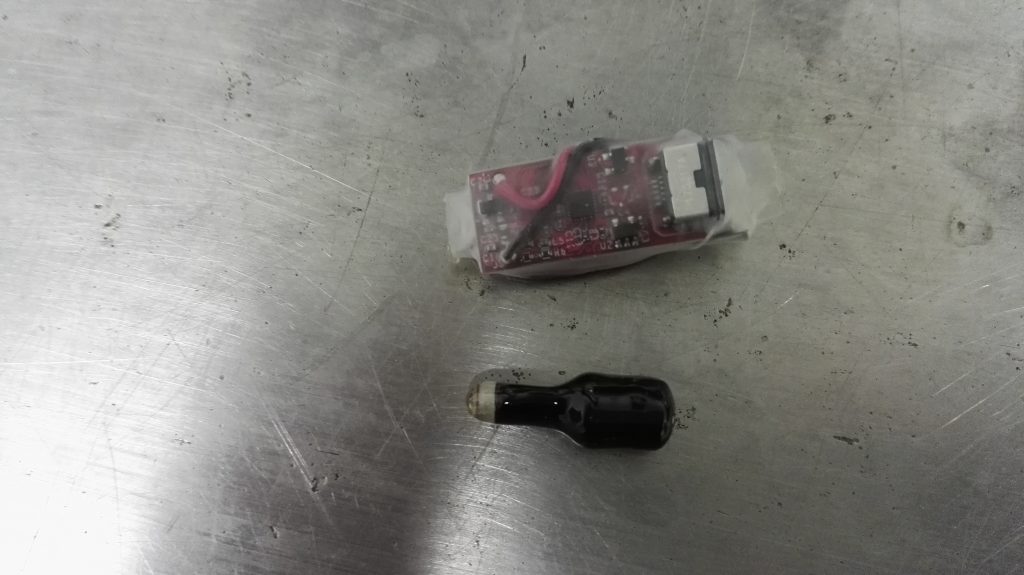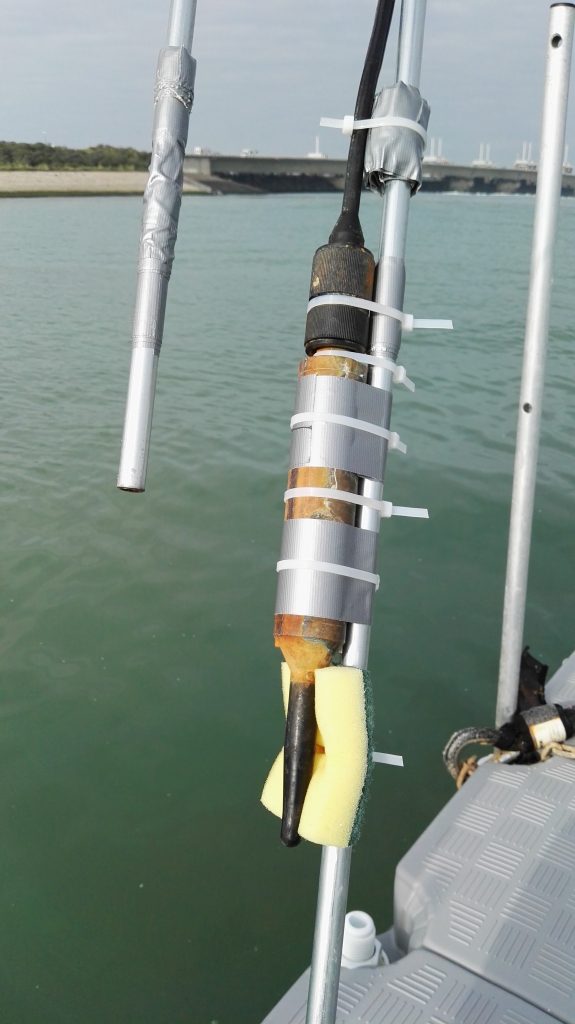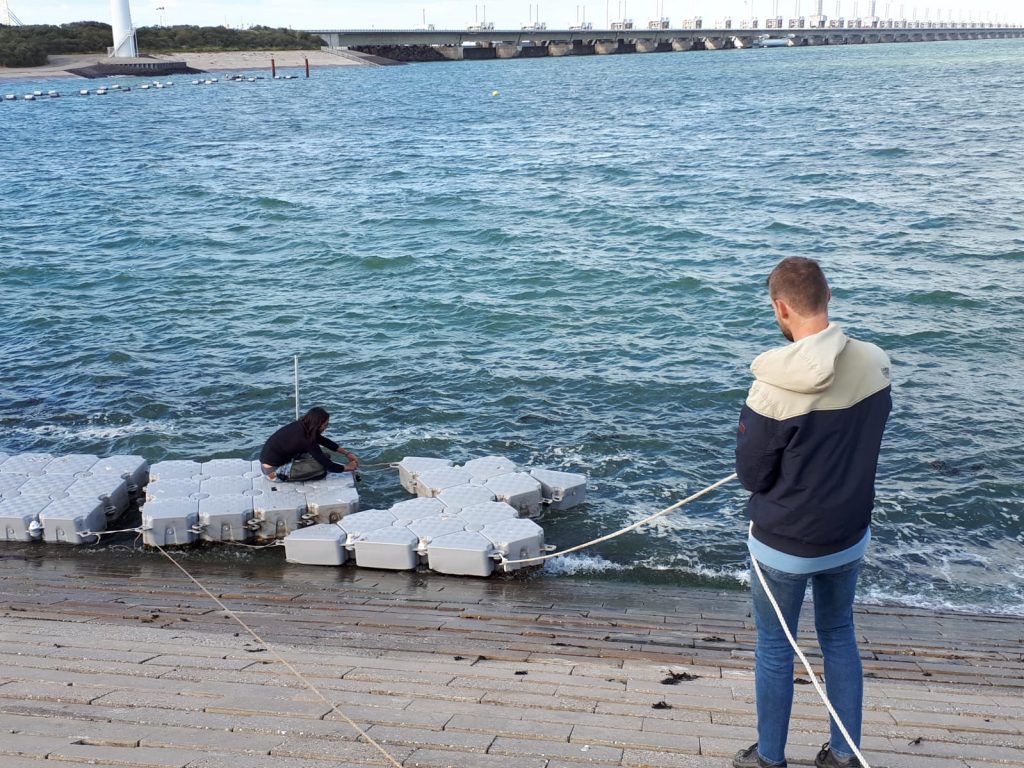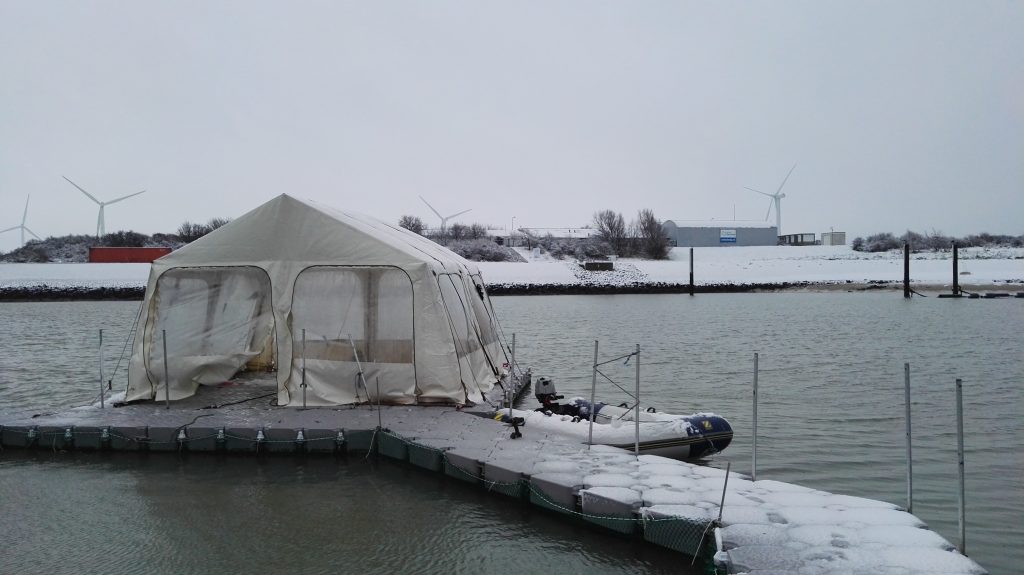We just published a new paper ‘Effects of seismic airgun playbacks on swimming patterns and behavioural states of Atlantic cod in a net pen‘ and it’s open access (HTML/PDF)! The paper is part of the PCAD4Cod project and is authored by James A. Campbell, Hans Slabbekoorn and myself.
Increasing amounts of studies are being conducted on the effects of sound on marine life, including fish. However, it remains complex to translate results from controlled experiments to consequences for fitness of an individual or population. A first step might be to quantify time spent performing particular behaviour, and changes therein due to sound exposures. In the future, these changes in time budgets may be translated to changes in energy budgets, and consequently to changes in growth, reproduction, and mortality.
We used Atlantic cod as our study species and tracked them for about a day while swimming in our floating pen set-up (see pictures). After about 20 hours of baseline conditions, we exposed them to an hour of seismic survey sound playback. Firstly, we showed that the cod did not immediately changed their swimming patterns upon sound exposure onset. Next, we used statistical models to classify the behaviour of the fish and modelled the behaviour as if no exposure had taken place. Here, we saw that some fish seemed to have changed their time spent performing certain behaviour. This may be translated to changes in energy budgets and consequently individual and population fitness consequences in the future.

